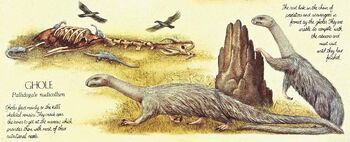
Gholes feed mainly on a body's skeletal remains. They crack open the bones to get at the marrow which provides them with most of their nutritional needs.
The ghole, Pallidogale nudicollum, is a large, scavenging, strictly carnivorous herpestine mongoose that is the most efficient scavenger of the African tropical grasslands, from After Man: A Zoology of the Future.
Its head and neck are almost totally devoid of hair, allowing it to reach inside the body cavities of carcasses without its coat becoming fouled. Its canine teeth are particularly huge and are capable of crushing most bones to get at the marrow. Gholes live in packs of about a dozen and have developed an almost symbiotic relationship with a species of carnivorous termite. This termite builds its mound with a horizontal shelf projecting out all round, a meter or so above the ground. The shelf provides shelter from the fierce midday sun where the ghole can bring bones and other tough parts of its meal to chew at leisure, The termites feed on the scraps of carrion that the ghole invariably leaves scattered around the mound, thus benefiting from the relationship.
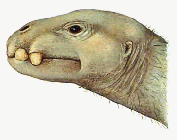
The ghole's head and neck are totally hairless.
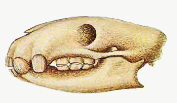
Its massive canine teeth and molars are designed for breaking and crushing bones.
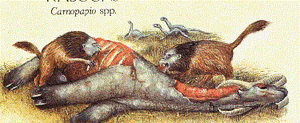
Gholes form the next link in the chain of predators and scavengers of Africa's tropical plains. They and scavenging birds are unable to compete with the raboons and horranes and must wait until they have finished.
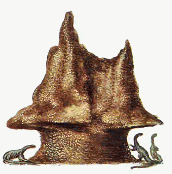
Gholes frequently devour their food beneath the shelter of overhanging termite mounds, where they find protection from the sun. The termites in return feed on the remaining scraps.
It usually takes about three days for the carnivorous/omnivorous predators and scavengers of the African grasslands to reduce a gigantelope carcass to no more than a few pieces of bone and hide and a patch of stained, trampled ground. The final remnants are consumed by insects and microorganisms.
